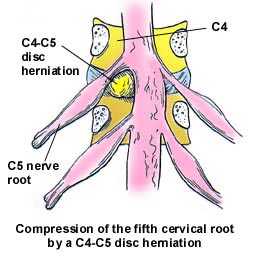What are spinal stenosis symptoms?
Symptome dieser Verengung des Spinalkanals beginnen oft als eine intermittierende Schmerzen, die allmählich beginnt, länger zu verweilen. Anfänglich, Dieser spitze, aber Low-Level-Schmerzen, kann nur auftreten, wenn die Wirbelsäule verdreht oder verbogen vorwärts oder rückwärts und frühen Spinalkanalstenose Symptome werden häufig durch Hinlegen entlastet, sitzend, oder biegt nach vorne.
Read more here: Spinalkanalstenose Symptome
Should I get a second opinion?
Definitely. If you’d like a second opinion about your spine condition and would like assistance deciding who to contact.
Send us your information and we will call or email you back: 2nd opinion assistance
How much is spinal stenosis surgery?
It depends on what type of surgery is being suggested by your surgeon. Factors include:
- Number of levels that need repaired
- How many sides (left, right, bilateral?)
- How severe spinal stenosis
- Type of insurance or payment method
See cash prices for spinal stenosis surgery here: spinal stenosis surgery prices
Spinalkanalstenose
Der Begriff "Stenose’ bedeutet eine Verengung der eine röhrenförmige Struktur in den Körper. Spinalstenose, dann, bedeutet Verengung in der Wirbelsäule, welche Häuser die Wirbel, Rückenmark, Bandscheiben, Nerven und anderen Geweben. Stenose als Folge eines Traumas auftreten, Entzündung, Gewebedegeneration, Tumoren, und aus anderen Gründen, und an einem bestimmten Punkt die Verengung kann eingeklemmten Nerven verursachen, Kompression des Rückenmarks und andere negative Auswirkungen.
Spinalkanalstenose Symptome
Nicht alle Spinalkanalstenose ist symptomatisch. Tatsächlich, viele Menschen haben ein gewisses Maß an Stenose, bleiben aber nicht bewusst, wenn sie nicht eine Röntgen- oder anderen bildgebenden der Wirbelsäule getroffen, die asymptomatisch Verengung enthüllt haben.
Wenn die Symptome der Spinalkanalstenose auftreten sie akut sein kann, chronisch, vergänglich, und variabler in der Natur. Solche Symptome können anhaltende Rückenschmerzen, Nackenschmerzen, Schmerzen im Gesäß und Schmerz über den Rücken der Beine in den Füßen. Menschen mit Spinalstenose kann ein Hinken entwickeln, können über ihre eigenen Füße auf einen Verlust der Empfindung und Motorsteuerung in den Beinen auslösen, und können damit beginnen, in immer weniger körperlichen Aktivität. Spinalkanalstenose Symptome können auch Parästhesien, oder Kribbeln, sowie Empfindungen von Wärme und Kälte, durch abnorme Nervenleitfähigkeit.
Im Laufe der Zeit, Nervenkompression kann Muskelatrophie aufgrund reduzierter Bewegung der Gliedmaßen führen. Stenose in der Wirbelsäule kann sogar dazu führen, Atembeschwerden, Änderungen in der Haltung, Stuhl- und Harninkontinenz, Erektionsstörungen und eine Reihe anderer Fragen.
Leben mit Spinalkanalstenose
Spinale Stenose ist ein ernstes gesundheitliches Problem, dass viele Millionen Menschen in einer Vielzahl von Möglichkeiten beeinflusst. Ohne entsprechende Behandlung, Spinalstenose kann zu dauerhaften Nervenschädigungen führen, Lähmungen und sogar zum Tod. When spinal canal narrowing is causing spinal cord compression this needs treating right away to decompress the spine and reduce the likelihood of significant and intractable damage.
Spinal Stenosis Causes
Stenosis can occur in any of the regions of the spine, although lumbar spinal stenosis is most common due to the mobility of this region of the back. Cervical spinal stenosis is also common, but thoracic stenosis is relatively rare as the middle segments of the spine are less mobile and, deshalb, less subject to wear and tear.
Disease such as arthritis, Osteoporose, osteopenia, ankylosing spondylitis, and degenerative disc disease can all be contributing factors to spinal stenosis, requiring appropriate treatment to relieve symptoms and prevent further degeneration of the spine.
Spinalkanalstenose – An Ever Increasing Problem
Spinal stenosis has been described as a silent epidemic and, as the population ages, the spread of this condition is increasing. Lumbar spinal stenosis is actually the most common reason for surgery in people over the age of 60 in the United States, with almost half a million people in the US suffering from lumbar spinal stenosis and many more experiencing cervical spinal stenosis.
By 2050, it is estimated that there will be nearly 2 billion people aged 60 and over (United Nations Population Division, Department of Economic and Social Affairs), meaning that it is crucial to find new and innovative ways to prevent, diagnose, and treat spinal stenosis and other musculoskeletal conditions that disproportionately affect older adults.
Spinal stenosis can significantly affect quality of life, making it difficult to work, exercise, socialise and even to care for family, friends or one’s own needs. SpinalStenosis.org is intended to help spread awareness of this difficult condition and to provide evidence-based information to those who need it, be they newly diagnosed with spinal stenosis, a long-time sufferer of spinal stenosis, or someone who is simply curious about maintaining spinal health throughout life.
While every effort has been made to provide balanced, factual information, a visit to this site is not an acceptable substitute for a professional medical consultation. Furthermore, während es ratsam zu Ihrer eigenen Gesundheitsversorgung aktiv zu werden in der Lern- und Entscheidungsprozess, keiner der Behandlungsmodalitäten auf dieser Site besprochen werden, ohne den Rat eines Staates lizenzierte Heilberuf tätige empfohlen.
